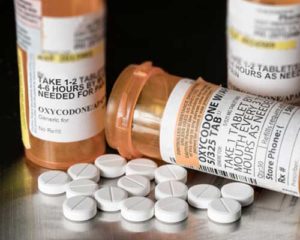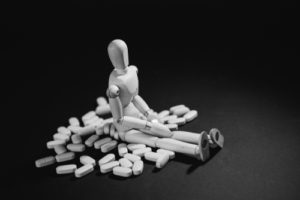Oxycodone Addiction
The opioid crisis shows no signs of slowing down, and drugs like oxycodone have significantly contributed to the epidemic in the United States. According to the U.S. Centers for Disease Control and Prevention, nearly 140 people a day are dying from overdoses involving opioids, which have become the sole focus in the United States.
There has been some progress, however, in the fight against opioids. States and organizations throughout the country have been suing companies like Purdue Pharma, which is responsible for creating the powerful drug OxyContin. The active ingredient in OxyContin is oxycodone, and it is a major contributor to the state of the crisis.
The state of Florida has taken it one step further. It is suing pharmacies Walgreens and CVS for their alleged role in this crisis. The previous Florida Attorney General went on record saying that the state is adding CVS and Walgreens to the lawsuit because they did not stop suspicious orders of opioids and had dispensed unreasonable quantities of the drugs.
This lawsuit also included opioid distributors and manufacturers Purdue Pharma and Endo Pharmaceuticals, which makes Percocet, and Teva Pharmaceutical Industries Ltd. Walgreens recently settled an investigation with the U.S. Drug Enforcement Administration (DEA) and agreed to pay $80 million due to inadequate record-keeping with regards to opioids.
While these are all strong measures implemented to tame the current crisis, there still are issues that need to be dealt with now. Oxycodone addiction is a very serious disease and is costing states like Massachusetts $2.5 billion a year in lost productivity from employees. This was due to them not showing up because of their addiction. This also includes the 32,700 people who do not participate in the labor force and those who died from overdoses in 2017.
Drugs like oxycodone are at the forefront and continue to affect the country.
Oxycodone has been referred to as “hillbilly heroin” because of the similarities it shares with heroin. While there is no direct correlation to oxycodone as a gateway to heroin, most heroin users mention they first used prescription opioids before moving on to heroin. Oxycodone has a high potential for abuse when a doctor’s directions are not followed. The unfortunate reality is that the medication does offer real medical value, but it is constantly a slippery slope between becoming addicted.
What Is Oxycodone?
Oxycodone hydrochloride is the active ingredient in drugs like OxyContin and Percocet and belongs to a class of medications called opioid analgesics. The drug is used to treat moderate-to-severe pain and is often prescribed in the treatment of chronic pain.
In a wider classification of drugs, it is known as a depressant like alcohol,barbiturates, and benzodiazepines. It works by blocking pain receptors in the brain and slowing the messages that travel between the body and brain. It works similarly to other opioids.
There are some side effects of oxycodone use, such as vomiting, nausea, dizziness, constipation, itching, dry mouth, and sweating. It has a high probability of causing addiction, withdrawal, dependence, and overdose when abused.
Oxycodone was first synthesized in 1916 in Germany and was designed to be a better medication than other opioids like heroin or morphine. It came to the United States in 1939 but was not widely used until 1996 when Purdue Pharma began making OxyContin. It was intended for the use of pain, but it was soon evident that it could be abused.
Signs and Symptoms of Oxycodone Addiction

There is a pattern that follows, and if you are worried that either you or a loved one has become addicted to oxycodone, understanding the signs and symptoms can be the key to changing someone’s life.
The first sign of an impending addiction is tolerance. Tolerance is when the initial prescribed dose does not affect you the same way it once did.
The dose you started taking becomes weaker over time, and this could cause you to increase it to achieve the same feeling. This leads to the next phase.
If you continue to use the drug despite a growing tolerance, it can lead to chemical dependency. Dependency is closely related to addiction, but it is not exactly the same.
Dependence occurs when the brain begins to rely on oxycodone to maintain balance and normalcy. If you stop or cut down suddenly and feel uncomfortable withdrawal symptoms, this could indicate your body has become dependent on the drug. These symptoms have been described as flu-like, which include excessive yawning, sweating, nausea, diarrhea, sweating, and chills.
If you’re concerned that you or a loved one is abusing oxycodone, some behavioral signs to look for are:
- Depression
- Anxiety
- Mood swings
- Lying about drug use
- Trying to quit but failing despite multiple attempts
- Hiding drugs around the house
- Loss of interest in usual activities
- Decreased performance at work or school
- Isolation
Addiction is the last stage of what is known as the compulsive use of a drug despite the serious consequences that result. This can include anything from getting arrested due to possessing the drug illegally or having health consequences like overdosing.
Oxycodone Addiction Treatment
Addiction treatment can really be the difference between life and death for some people. A continuum of care addresses substance use disorders by treating the root of someone’s addiction.
This model will treat all needs ranging from how to balance a checkbook to therapy sessions that aim to alter behaviors that support sobriety. The sole purpose is to give someone their life back and become productive outside of treatment. For it to be effective, it must address and treat medical, psychological, social, legal, and financial needs.
While oxycodone withdrawal symptoms are not dangerous like those of benzos or barbiturates, they are extremely uncomfortable. Most of the time, people continue to use drugs to avoid the sickness, and this is why the individual must seek out detox.
Medical detoxification is the first and most intensive phase in the continuum of care and involves 24-hour supervision by trained medical staff. This will allow you to address any complications that could arise in a safe environment.
The next step in the continuum of care can vary depending on several circumstances. This can include a history of relapse, the severity of addiction, and if the client has a safe living environment outside of treatment. The types of treatment include:
- Residential inpatient services
- Intensive outpatient services
- Outpatient services
Whichever path the team decides, the client will have access to a variety of therapies designed to help them address triggers and exercise coping mechanisms in post-treatment life. These can range from cognitive-behavioral therapies, group therapy, individual therapy, and family therapy.
How Dangerous Is Oxycodone?
Oxycodone is a prescription drug that’s safer than illicit options like heroin or fentanyl. However, when it’s abused, it can be extremely addictive. Because it can cause euphoria and it’s commonly prescribed for a wide variety of uses, oxycodone has a high abuse potential.
The drug may be prescribed for something like pain management after your wisdom teeth are removed. Doctors often prescribe more than you need so that you don’t run out and start experiencing pain symptoms. The excess finds its way to medicine cabinets, or it’s given to friends and family.
It is reported that 75 percent of individuals who entered treatment during the 2000s for heroin abuse started by abusing prescription opioids like oxycodone. It often starts when people get prescription pills from family members.

Using oxycodone as prescribed can make it unlikely that you will fall into a substance use issue. It is a slippery slope, however, and constant communication with your doctor to monitor your progress is important.
Oxycodone, like other opioids, can cause potentially dangerous overdose symptoms. Since the drug suppresses your nervous system in some ways, heavy doses can cause it to slow down important functions like your heart rate and breathing. A dangerous overdose is usually characterized by respiratory depression, hypoxia, brain damage, loss of consciousness, coma, and death.
Oxycodone is more dangerous if it’s mixed with other opioids and central nervous system depressants. It can combine with other opioids, alcohol, benzodiazepines, and other sleep aids to cause more intense effects. When they are taken together, they can cause an overdose with much lower amounts of each individual drug.
Oxycodone Abuse Statistics
- 80% of people who use heroin misused prescriptions first.
- 21% to 29% of patients with opioid prescriptions abuse them.
- 191 million opioid prescriptions were filled in 2017.
Addiction is a chronic and progressive disease that can end in death for some. It is, however, a treatable disease with advances in modern addiction treatment. The hardest part may be admitting to the problem and overcoming it. If you or someone you know might be struggling with a substance use disorder related to oxycodone, you should seek help as soon as possible. Opioid prescription addictions can get worse over time. In many, pill addiction can lead to the use of more dangerous illicit drugs like heroin.


